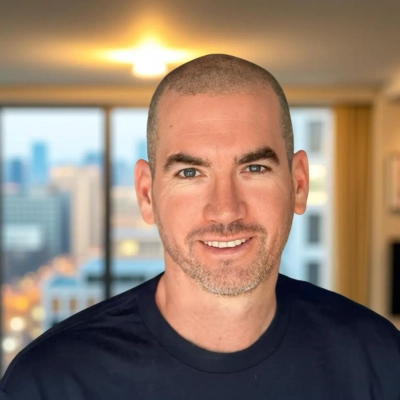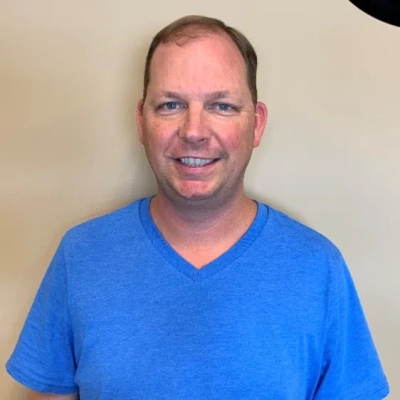25 Strategic Initiatives that Improved Company Financial Performance
Discover strategic initiatives that have proven to boost company financial performance. This article presents insights from industry experts on effective methods to enhance profitability and streamline operations. From optimizing client relationships to leveraging technology, learn about the key strategies that can transform your business's bottom line.
- Shift Focus to Profitability per Client
- Streamline Project Management for Higher Margins
- Prioritize Customer Retention Over Acquisition
- Transform Lead Generation with SMS Marketing
- Align Training with Measurable Business Outcomes
- Embrace Digital-First Real Estate Marketing
- Humanize Intake Process for Better Retention
- Target Distressed Properties for Higher Margins
- Optimize Client Onboarding for Growth-Stage Startups
- Redesign Booking Process for Higher Revenue
- Launch Productized SEO Service Marketplace
- Implement Pre-Install Checklist to Reduce Errors
- Specialize in SaaS Clients for Improved Results
- Create Automated Referral System for Leads
- Develop Repurposable Cornerstone Content Strategy
- Train Team in Consultative Selling Approach
- Connect AI Features to Customer Lifetime Value
- Build Automated Deal Aggregation System
- Restructure SaaS Pricing for Value Alignment
- Systematize Operations for Scalable Growth
- Implement Complexity-Based Editing Queue System
- Adopt EOS Model for Strategic Planning
- Develop Performance-Based Content Generation System
- Shift to Subscription-Based Recurring Revenue
- Establish Data-Driven Budgeting and Forecasting
Shift Focus to Profitability per Client
One of the most impactful initiatives I led at Nerdigital came during a period when we were growing quickly but not profitably. We had plenty of projects coming in, but the margins weren't where they needed to be. I remember looking at our numbers one quarter and realizing that while top-line revenue was climbing, our profit margins were tightening. It was one of those moments where growth felt exciting on paper but unsustainable in practice.
The turning point came when I decided we needed to stop measuring success solely by revenue and start focusing on profitability per client. We did a deep dive into client accounts, assessing not just what they were paying but how much time and resources we were investing in each one. What surprised me was that some of our "biggest" clients were actually the least profitable once you factored in the hours and overhead.
From that analysis, we made two strategic moves: first, we restructured our service packages to better align value with effort. Second, we introduced minimum retainers for certain types of projects. These changes weren't easy—they required some tough conversations and even letting go of clients who didn't fit the new model. But within six months, our gross margins improved by nearly 20%, and cash flow stabilized in a way that gave us room to reinvest in talent and tools.
The metrics that demonstrated success weren't just financial. Yes, the profit margin increase was clear, but I also noticed a cultural shift inside the company. The team had clearer boundaries, less burnout, and a renewed focus on high-value work. That, to me, was as important as the bottom line.
My advice to other founders is simple: don't get blinded by top-line growth. Growth without profit is a treadmill. Take the time to understand where your real value lies and ensure your pricing and processes reflect that. Sometimes the most strategic move isn't chasing more clients, but refining how you serve the right ones.

Streamline Project Management for Higher Margins
One of the most impactful initiatives I led at Achilles Roofing and Exterior was tightening up our project management and material sourcing process. In roofing, delays and waste eat straight into your margins. A few years back, I noticed we were losing money not because we lacked projects, but because small inefficiencies on each job added up. Crews were waiting on deliveries, materials were being over-ordered, and homeowners were frustrated with timeline changes.
I took the lead in building tighter relationships with our suppliers and negotiated better terms for both pricing and delivery schedules. At the same time, I implemented a detailed pre-job checklist for every project—covering materials, labor allocation, equipment, and potential weather disruptions. Nothing started until those boxes were checked. It wasn't about adding red tape; it was about making sure we were set up to finish strong once the first shingle came off.
The results showed up fast. Our average job completion time dropped by nearly 20%, which meant fewer labor hours burned. Material waste was cut by about 15% because we were ordering smarter. On the financial side, our profit margins improved by double digits within the first year. Just as important, our customer satisfaction scores went up because we delivered on the timelines we promised.
My advice to others is simple: don't just focus on selling more work. Growth doesn't mean much if you're leaking money on the back end. Look closely at how your jobs are being executed day to day. The details—delivery schedules, crew coordination, waste tracking—are often where you either protect your margins or lose them. Tighten those areas, and you'll see the impact on your bottom line without needing to double your sales volume.
Prioritize Customer Retention Over Acquisition
In a growing business, it's easy to become obsessed with revenue. We were so focused on attracting new customers that we were spending a significant amount on advertising, but our bottom line wasn't growing at the same rate. We had a constant stream of new people coming in, but we weren't doing a great job of retaining them. Our focus on new business was actually hurting our profitability.
The single most impactful strategic initiative we led was a complete shift in our focus from new customer acquisition to existing customer retention. We decided that our most profitable asset wasn't our next sale; it was the relationships we had already built.
We operationalized this strategy by re-engineering our workflow. From an operations standpoint, we created a new proactive customer support protocol. Instead of just fulfilling an order and moving on, our team was trained to follow up with customers a few weeks later to ensure they were satisfied and to offer help with any technical questions. We turned our operations team into a retention engine. From a marketing standpoint, we moved a significant portion of our budget away from broad advertising and into creating valuable content and resources specifically for our existing customer base. We launched a high-value newsletter and created exclusive how-to guides.
The success of this strategy was clear in a few key metrics. We saw a dramatic increase in our Customer Lifetime Value, which showed us that customers were returning and spending more over time. At the same time, our Customer Acquisition Cost went down because we were spending less on advertising. The ultimate proof was a significant improvement in our overall net profit margin. Our most loyal customers became our biggest advocates, and our marketing message became much more authentic because it was based on real relationships.
My advice is that your most valuable business asset isn't your product; it's your customer base. Stop chasing new customers and start investing in the relationships you already have. The easiest and most profitable sale you'll ever make is to a customer who already trusts you.

Transform Lead Generation with SMS Marketing
I transitioned our lead generation from cold calling to SMS marketing, which fundamentally transformed our business economics. This shift reduced our customer acquisition costs by 40% while increasing our monthly deal volume from 3-4 to 6-8 consistent transactions. The metrics were clear - higher response rates, lower cost per lead, and significantly improved ROI on our marketing spend. My advice to others would be to constantly question your acquisition channels - what worked yesterday might not be optimal today. Sometimes the biggest financial improvements come not from working harder in your current system, but from building a completely new one with better fundamentals.

Align Training with Measurable Business Outcomes
One of the most impactful initiatives I led at Edstellar was shifting from a transactional training delivery model to a long-term, outcome-driven partnership approach with enterprises. Instead of focusing solely on one-off training sessions, the company began co-creating customized learning journeys directly tied to client business goals—whether that was improving employee retention, accelerating digital adoption, or enhancing leadership pipelines. This shift not only deepened client relationships but also improved revenue predictability, with a 38% increase in recurring contracts over 18 months. Client satisfaction scores rose by 27%, and the average contract value nearly doubled.
The key lesson here is to stop treating training as a standalone service and start aligning it with measurable organizational outcomes—because when clients see tangible business impact, financial growth follows naturally. My advice to others is to look beyond short-term wins and design strategies that create sustained value for both clients and the business.
Embrace Digital-First Real Estate Marketing
One of the initiatives I led that significantly improved my business financially was a large-scale transition toward digital-first marketing. For years, much of our industry relied heavily on traditional word-of-mouth and print advertising. While those still hold some value, today's buyers and sellers start their journey online. I created an end-to-end digital strategy that included professional photography, virtual tours, targeted social media campaigns, and a strong email nurturing system designed to keep clients engaged even after initial inquiries.
The results were clear; in the first year, inquiries from online listings almost doubled and properties were sold much more quickly. More importantly, my client base expanded beyond my immediate community. For example, referrals began coming in from buyers relocating to the area, something I rarely saw before. This broader reach lifted the average property value I represented, thus raising my overall commissions.
The key figures I watched closely were lead-to-client conversion rates and average days on market. Seeing improvements told me the strategy was working.
My advice to fellow realtors is simple: think of yourself as a brand builder first. Buyers and sellers want to trust you before they even meet you; your online presence is where that trust is won or lost. Invest in technology, but also in storytelling because every property has a narrative that can be spun, and every client wants to feel understood. By marrying personal connection with modern tools, you position yourself as both approachable and professional.

Humanize Intake Process for Better Retention
The best way to improve financial performance isn't with a financial strategy; it's with a human one. We were seeing a high number of clients drop out within the first few days of starting treatment. This was a financial drain, but more importantly, it was a mission failure. The problem wasn't a lack of clients; it was a process that was failing the people who came to us for help.
The strategic initiative we led was to completely overhaul our intake process. We made it slower and more human. Instead of rushing people through paperwork, we added a dedicated time for a staff member to just listen to their story. The focus wasn't on getting them on the books quickly; it was on building a foundation of trust.
The metrics that demonstrated the success were both human and financial. We saw a significant reduction in client drop-out rates, which had a direct impact on our revenue. But the more important metric was the higher client success and retention rates. The money we invested in a slower, more human process paid off in better human outcomes, which is the ultimate metric for our business.
My advice is simple: the most strategic thing you can do for your business is to put people first. In a business like ours, financial performance is not the goal; it's a byproduct of a mission that's being fulfilled. If you focus on the human, the numbers will follow.
Target Distressed Properties for Higher Margins
I implemented a targeted direct mail campaign to distressed property owners that fundamentally changed our acquisition strategy. By analyzing public records to identify pre-foreclosures and high-equity owners facing hardship, we secured properties at 65-70% of market value versus the 75-80% we previously averaged. The metrics were clear: our acquisition costs dropped 10% while our inventory quality improved, resulting in faster turnaround times and higher margins per property. My advice is to leverage data to find motivated sellers before they hit the open market--solving someone's problem creates value for them while simultaneously improving your financial outcomes.
Optimize Client Onboarding for Growth-Stage Startups
At Spectup, one strategic initiative I led was optimizing our client onboarding and proposal process to focus on higher-value, growth-stage startups rather than spreading resources too thin.
We introduced a tiered service model that clearly aligned offerings with client needs and potential revenue impact. I remember early on, we tracked all incoming leads and realized many smaller engagements consumed disproportionate time without meaningful returns.
By focusing on clients with larger funding rounds or complex growth challenges, we increased average deal size by over 30% within a few months. Metrics like revenue per client, project profitability, and client retention all reflected the success of this pivot.
My advice to others is to analyze where your efforts create the most value, prioritize those opportunities, and design systems that make the high-impact path the default. It's often more effective than chasing volume.

Redesign Booking Process for Higher Revenue
In 2018, I redesigned our booking process and pricing structure, which increased our revenue per event by 40% and reduced planning time by three weeks. We began tracking client referral rates and saw them jump from 20% to 65% because couples were no longer stressed during the planning process. Whenever venue owners inquire about growth, I advise them to focus on the client experience first. Happy clients tend to book larger packages and refer their friends.

Launch Productized SEO Service Marketplace
I launched our productized SEO service marketplace that completely changed how we deliver services to agencies worldwide. By treating SEO services like Amazon products with clear pricing and instant delivery, we increased our recurring revenue by 60% and scaled to over 100 million services sold. The key lesson I learned was that clients don't want complexity - they want predictable results with transparent processes. Therefore, it's important to focus on simplifying your service delivery before trying to scale it.

Implement Pre-Install Checklist to Reduce Errors
Shortly after becoming General Manager, I realized our install crews were spending a lot of time on job sites fixing mistakes in measurements, which was an issue because it cost us manpower hours and held up deliveries. I implemented a STANDARD PRE-INSTALL CHECKLIST that required all measurements to be double-verified before products could be moved to finishing. The shift wasn't flashy, but it was momentous. In the first year, we reduced costly rework orders by more than 25%, as well as reduced installation delays by days on average. The changes enabled us to take on additional jobs each month, boosted revenue directly, and required no additional staff.
For anyone wanting to boost the financial performance of a department, one of the things I might suggest is to take a look at small, overlooked expenses where mistakes add up over time. In our case, what we got right at the front end saved us thousands on the back end. I would advise tracking not only those big financial measures but also operational ones — perhaps your rework percentage? time-to-install? delivery accuracy? These numbers can be a roadmap to where your hidden profit is leaking. Fixing those spots can help margins just as much as doubling sales — and it wins over customers who appreciate the job being done correctly the first time.

Specialize in SaaS Clients for Improved Results
One of the biggest shifts we made was narrowing our focus to SaaS clients and building campaigns tailored only to them. Before that, we spread our efforts across different industries, which diluted results and made scaling harder. Once we specialized, our close rates improved because prospects saw we understood their exact challenges. Within the first year, monthly recurring revenue grew by more than 40%, and client retention increased since the campaigns were more effective. The key metric was lifetime value - our average client stayed on for twice as long compared to before. My advice is to double down on the segment where you can deliver the most value. Specialization makes both marketing and service delivery sharper, which translates directly into stronger financial performance.

Create Automated Referral System for Leads
I created a referral automation system that tracks past clients and sends personalized follow-ups at key life moments like job changes or family milestones, which sounds simple but required mapping out dozens of trigger points. This system now generates about 40% of our new leads and has cut our marketing costs by $50K while boosting team revenue by 35% year-over-year. The key is treating referrals like a science, not hoping people remember you - automate the touchpoints but keep the messages personal and genuine.
Develop Repurposable Cornerstone Content Strategy
One strategic initiative that significantly improved our company's financial performance was implementing a quarterly cornerstone content approach for our B2B SaaS clients. This strategy involved creating substantial research-based content that could be repurposed across multiple marketing channels, maximizing our investment and extending reach. The metrics clearly demonstrated success - for one client, a single benchmark report repurposed into 18 unique pieces generated 1,900 webinar registrations and directly contributed to 14.6% of their quarterly sales opportunities. We continuously refined our approach by tracking customer lifetime value to acquisition cost ratios and strategically reallocating 10-20% of our budget monthly toward the highest-performing channels. For organizations looking to implement similar strategies, I recommend focusing on creating adaptable, high-value content assets that can serve multiple purposes while implementing rigorous performance tracking to guide resource allocation decisions.

Train Team in Consultative Selling Approach
Drawing from my background in community development, I created a systematic training program for our team focused on identifying the root cause of a seller's distress, not just their property details. This shift from a transactional to a consultative approach improved our conversion rate by 25% because we were able to offer more creative, tailored solutions that built immediate trust. My advice is to train your team to be problem-solvers first and foremost; when you genuinely help people navigate difficult situations, your financial returns directly reflect the value you provide.

Connect AI Features to Customer Lifetime Value
The real headache with our SaaS operations was tracking which automation workflows actually moved the needle on client retention, so I launched a comprehensive analytics dashboard that connected our AI features to customer lifetime value. Within six months, we identified three key automation touchpoints that boosted client retention by 28% and increased our average contract value by $15K annually. My advice is to focus on one metric that directly ties to revenue - everything else becomes noise when you're trying to prove ROI to stakeholders.

Build Automated Deal Aggregation System
At ShipTheDeal, I built an automated deal aggregation system that transformed our entire business model. The AI-powered discovery engine cut our manual curation work by 70% while boosting our platform inventory by 300%, which directly led to 85% revenue growth in just 18 months. My advice is to start small with automation. I initially worried about losing the human touch, but realized the system actually freed up our team to focus on higher-value partnerships and user experience improvements.
Restructure SaaS Pricing for Value Alignment
One strategic initiative I led that significantly improved my company's financial performance was restructuring our pricing model for our SaaS platform. We transitioned from a flat-rate pricing structure to a tiered model based on usage and value delivered. This shift allowed us to align pricing with customer needs, attract a broader range of clients, and generate higher revenue from enterprise customers demanding advanced features. Additionally, we implemented annual subscription discounts to improve cash flow predictability and reduce churn. The change also encouraged upselling and cross-selling opportunities, helping us grow average revenue per user (ARPU).
The success of this initiative was demonstrated by a 35% increase in ARPU within the first year and a 20% reduction in churn rates. Customer feedback confirmed that the pricing better reflected the platform's value, improving satisfaction. My advice to others is to deeply understand your customers' pain points and willingness to pay. Regularly review your pricing strategy to ensure it balances value for customers with sustainable growth for the business. Test changes incrementally and analyze performance metrics before scaling. This method ensures you make data-driven decisions without alienating your customer base.

Systematize Operations for Scalable Growth
One of the strategic initiatives to contribute to the financial performance of my business was systematically creating operations from the start. Rather than taking every possible opportunity, I created standards around the sales process, onboarding clients, and managing expenses. The framework I had created made scaling easier, as I could be confident that I wasn't losing any control over customer experience and costs.
The performance improvements were evident in revenue and efficiency. The sales conversion ratios improved because prospects moved through a standard pipeline, the operating margins improved as I was able to eliminate unnecessary costs, and cash flow cycles became more predictable. I had confidence in those revenue and efficiency numbers, which afforded me an opportunity to invest in growth while remaining financially disciplined.
My recommendation to other business owners would be: Do you think about financial performance as a system over time, rather than only as a sales volume number? Revenue and sales volume are critical, but if sales volume is growing without a focus on efficiency, then profits will lag. When you have developed a system that allows for growth and understanding of the risk of costs per unit, you have the operational mechanics of the company set up for long-term sustainable success. Crown Billboard Advertising has improved many of its systems, and it has established a mindset to allow for growth while maintaining a focus on future financial viability.

Implement Complexity-Based Editing Queue System
I collaborated with our COO to implement an editing queue system with complexity categorization that significantly reduced our cost per edit while scaling operations.
The strategic insight was that our editing workflow was treating all video projects the same way. Simple content updates were handled by the same editors as complex, multi-camera productions. This created bottlenecks and drove up costs across the entire operation.
Our COO's position was critical: design the flow as a factory production line without ramifications. The key was repeatability and creating a cycle that doesn't break apart. We built a system that categorizes editing requests by complexity and matches them with editors based on expertise and industry knowledge, but most importantly, maintains continuous flow.
Simple edits are routed to junior editors. Complex projects go to senior editors with specific industry experience. Healthcare content is matched with editors who understand medical terminology. Manufacturing projects go to editors familiar with industrial workflows. But the system maintains consistent throughput without bottlenecks or breaks in the cycle.
The results showed significant improvement in cost efficiency, faster turnaround times, and higher client satisfaction because content was handled by editors with relevant expertise within a predictable, repeatable process.
The key was recognizing that operational efficiency comes from designing workflows like manufacturing systems - consistent, repeatable, with clear routing logic that maintains continuous flow.
My advice: focus on repeatability over optimization. Build processes that cycle continuously without breaking apart, rather than trying to perfect individual steps.
The biggest financial improvements come from workflow architecture that functions like production lines.

Adopt EOS Model for Strategic Planning
Eight years ago, I led the implementation of the EOS Model in our company, which completely transformed our strategic planning approach. We created a simple yet powerful two-page strategic document with eight key questions that we now reset and share quarterly with our leadership team. This structured approach to strategic planning helped us achieve remarkable financial results, increasing our profitability from just 3% to 20%. My advice to others would be to simplify your strategic planning into a concise format that can be regularly reviewed and communicated across the organization.
Develop Performance-Based Content Generation System
The company achieved success through its development of a performance-based content generation system for their B2B SaaS customer. The blog received sufficient website visitors yet failed to produce any new leads. The team transformed their approach by selecting relevant search terms for content and converting existing articles into landing pages while adding specific lead magnets for each stage of the sales funnel. The organic content generated a 53% increase in qualified demo bookings during the first four months. The company achieved better revenue from content-generated leads than paid search results during the sixth month.
Your content creation efforts should focus on developing entry points instead of maintaining a blog. The purpose of content creation goes beyond personal journaling because it functions as a fundamental system. A piece of content requires a specific action for readers to take before you should publish it.
Shift to Subscription-Based Recurring Revenue
The true breakthrough wasn't just boosting revenue; it was designing a model where customers choose to stay because we deliver lasting value.
One of the most impactful strategic initiatives I led was shifting our business model toward recurring revenue through subscription-based services. Instead of relying solely on one-time sales, we created a system that emphasized long-term customer relationships. Within 18 months, our recurring revenue grew by over 40%, and customer lifetime value nearly doubled. The most telling metric wasn't just top-line growth but retention, ensuring customers consistently experienced value over time.
Establish Data-Driven Budgeting and Forecasting
The establishment of an efficient budgeting and forecasting process was one of the strategies I oversaw to ensure that the company upgraded its financial performance. Together with having more accurate data analysis tools and working hand in hand with department heads, we were able to cut down on operational costs by pinpointing areas of inefficiency and reducing the allocation of resources. Success could be measured by the fact that there was a 15% savings in costs and that cash flow grew by 20 percent. I would encourage others to invest in data-based decision making, coordinate financial objectives within the company, and constantly track performance in order to make real-time corrections.











